SUMMARY
This is AI generated summarization, which may have errors. For context, always refer to the full article.
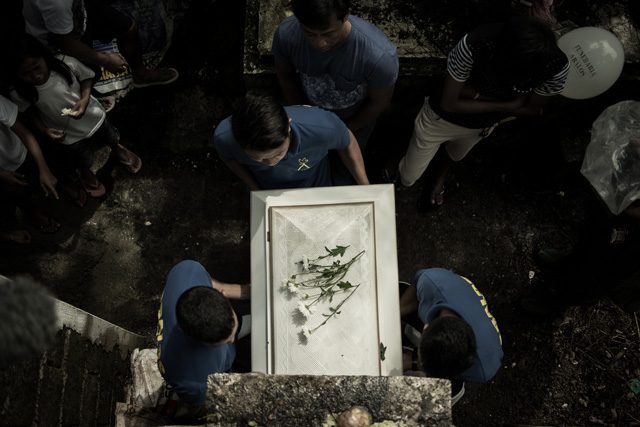
This compilation was migrated from our archives
Visit the archived version to read the full article.
Maximo Garcia did not attend his granddaughter’s funeral. His family told him to keep away.
If he owned a car, he would have gone anyway, no matter what his wife thought. He had planned it all out. He would follow the procession. He would park nearby. He would watch in secret from behind the windshield as the three men – it took only three men – carried the small white coffin into a corner of the flooded public cemetery.
Only Maximo didn’t own a car, and knew no one he could have borrowed one from.
He understood why he shouldn’t go, and why his family had taken him straight from the hospital to a house far from where he had lived most of his married life. The men in masks could come back to the Mayombo house and finish the job. Nobody would go to visit his Danica Mae.
Maximo wanted Danica surrounded by her mourners. She deserved it, and so much more.
On Wednesday, August 31, eight days after he last saw his granddaughter, Maximo sat inside a small cement room where the face of Jesus Christ looked benignly down from a wall calendar. His daughters told him they would take video on their phones. Wait for it on Facebook, they said. Wait for the funeral video, we’ll make sure you can see.
Maximo had been a supporter of Rodrigo Duterte. He still wears the red and blue baller band with Duterte-Cayetano outlined in white. He said he knew whom he was voting for. There was a drug problem, and he chose Duterte hoping the scourge would end with the mayor from the south. Maybe Danica would have died even without Duterte in the Palace, maybe she wouldn’t have. All he knows is that there have been many deaths, many of them men on the same list his name had been found.
“Let them come and kill me if they can,” he said. “I leave it to God. God knows who is the sinner, and who is the one with the truth.”
So Maximo waited alone, a big man with a hard, heavy belly and red-rimmed eyes. He cried a little, prayed a little, cleaned what bullet wounds he could reach. He called Danica’s parents, and told them to lean over her coffin and whisper to her that grandpa loved her.
He told them to say he was doing this for her.
IN HIDING. Maximo Garcia, who suffered from three bullet wounds, remains in an undisclosed location. Photo by Patricia Evangelista / Rappler
The watchlist
Maximo and his wife Gemma raised their six children in the small village of Mayombo, Dagupan City.
Maximo was a tricycle driver, navigating the flooded roads off the Pantal River until his body began giving him trouble. First his gut, then his head, then his knees, until one day in November 2015 when Maximo crawled into bed and couldn’t get up again.
His wife thought it was because of a can of expired sardines. He was vomiting and in pain. When she finally took him to the hospital, the doctors told her he had a mild stroke, and that there were bubbles of air in Maximo’s brain. Not quite a clot, but enough to paralyze his legs and keep him bedridden for the next four months.
Gemma worked, cooking meals she sold from the front stoop, where the water creeps past the ankles at high tide and rises to the waist in the storm season. She was mother and father and caregiver, keeping Maximo fed along with the daughter and grandchildren still living with them.
Maximo raged at his uselessness. The family couldn’t afford his therapy, and took turns massaging his swollen legs instead. By February, he was sitting up. By March, he could walk a few steps without crutches.
One day in August, Gemma received a message from a village councilor whose house was behind theirs. He told Gemma to go to the village hall. He said there was something she needed to know.
The village captain showed her to his office, then presented her with a master list of Mayombo’s drug suspects.
Maximo’s name was number 12.
MAYOMBO. Gemma Garcia, grandmother of Danica Mae, stands by the alley where her granddaughter was killed on August 23, 2016. Photo by Patricia Evangelista / Rappler
The police
Gemma went home with a photocopy of the list. One daughter looked at the printed chart and panicked. They both saw what Gemma had missed – Maximo wasn’t just listed as a user.
The list ran 25 lines long. Midway through was Maximo Garcia, alias Ama Jun, position: Pusher.
Maximo was terrified.
This is going to be bad, he said. In Mayombo, drug pushers are killed.
At the advice of village officials, Maximo went to the police station on Friday, August 19. He went straight to the chief to clear his name.
Yes, he said, he had used drugs before. No, he said, he no longer did, and didn’t intend to use again.
The chief said it was a good thing he came. They took Maximo’s picture. They wrote “user” under his name. They had him sign a sheet of paper and swear an oath before the cops.
He went home confident. Gemma thought he was safe.
WAKE. The coffin that held Danica Mae Suarez was piled with her favorite toys. Photo by Patricia Evangelista / Rappler
The incident
Four days after his visit to the police station, the Garcia family was at lunch in their front room. The Arzadon Compound home was open to the road. There were no doors, just a table with an old campaign tarp separating the space from the alley in the back.
Two grandsons sat beside Maximo with plates of eggs and hotdogs. Gemma sat on a bench with one daughter. The tide had pulled back just enough for tricycles to rattle down the street.
At ten minutes past noon, a motorcycle carrying two men came to an abrupt stop five meters away from where Maximo sat. Both men wore baseball caps. Bandannas covered their faces. Only the eyes were visible.
Maximo saw the pistol. He managed to turn before two bullets slammed into his back.
He fell, then staggered upright. He kept moving as another bullet scraped by his side. He shouldered past the tarp and the makeshift kitchen and the shelves of soy sauce and vinegar, splashing through the alley where the family would bathe out of a yellow drum, falling over his own feet into the mud and muck of the backyard where the laundry hung in lines, lumbering out into the open swamps where the houses stood on stilts. He waded through the garbage, heart pumping, leg screaming, going as far as he could go before he wedged himself into the narrow gap between a house and somebody’s bathroom.
He hid for two hours. He stood rigid, back pressed against the wall, full weight resting on one foot, bullet wounds open in the dirty water, waiting, waiting for the final bullet to smash into the back of his head.
He never looked back. If he did, he would have seen his granddaughter sprawled across the alley where he had passed, dead where she fell.
AFTERMATH. Danica Mae’s mother Daisy spent most of her daughter’s wake sitting in the flooded Garcia front room, holding her daughter’s photo. Photo by Patricia Evangelista / Rappler
The granddaughter
Her name was Danica Mae. She was five.
Danica liked to hold fashion shows dressed in her mother’s clothes. She liked to imitate pop stars and often said she was going to be an actress. She liked Queen Elsa and Chuckie chocolate milk and all things pink. Her slippers, her flowered sandals, the small sneakers, the tin pencil case, the drinking cup with the straw on the lid, all of them were pink.
She was her grandparents’ darling – even her 13-year-old sister Sheila admits Danica was the favorite. Gemma said their mother Daisy at 29 had the mental capacity of a six-and-a-half year-old child. Both girls had been raised by Maximo and Gemma. The girls had different fathers, but it was Danica’s father Joseph who continued to be part of their lives, appearing whenever he could to see his waiting girl.
They said Danica was a happy child, and kind, always kind. It was Danica who would massage her grandpa Maximo’s sore knee until he fell asleep, and who would comb his hair while he lay in bed.
The gunshots rang out just as Danica was taking a bath. She stood in the alley behind the front room, hidden from view by the campaign tarp. A cousin crouched beside her. Another sat on a toilet inside a cement stall.
Two bullets ripped into the tarp. One of them went through the open door of the bathroom, right between the feet of a young boy. Another bullet slammed into the back of Danica Mae’s neck.
Danica’s mother Daisy raced after Maximo and found her daughter instead. She picked up the naked 5-year-old and stood up, Danica’s head lolling over Daisy’s arm, blood running into the water.
It was the scene that the gunman saw when he burst into the back alley.
He stopped, then ran back to the waiting motorcycle.
FATHER. Joseph Escaño, Danica’s father, sits beside Daisy Garcia at the Saint Therese Parish Church, where a mass was held before Danica’s burial. Photo by Carlo Gabuco / Rappler
The call
Joseph Escaño’s first wife had died of a fever years before he met Daisy. They stayed together a full month before they separated after Danica Mae was born. He took odd jobs, travelled as a trucker’s assistant, and drove a pedicab or worked in construction whenever he could find the time. Danica Mae was his baby. She was the child he worked for and for whose future he saved for.
Every day, whenever he was in town, he would swing by Maximo’s house to find his daughter waiting on the front stoop.
There was shrieking every time, Papa, Papa, right before Danica threw herself into his arms.
Danica had broken her school umbrella the week before they lost her. She had asked Joseph for a raincoat instead. He wandered across Vigan looking for it, and found a small coat at P150. He packed it into his backpack, along with a pair of pink rubber slippers he bought as an extra treat.
He was on his way to see her straight from Vigan when he got the call. It was one in the afternoon. He was in a truck, and he asked the neighbor on the phone to repeat what he said.
Maximo had been shot. Danica was dead. Joseph couldn’t understand.
They sent Joseph to the morgue. He carried his bag with him, with the small pink raincoat folded inside.
He left it with Daisy after, so she would have something to hold.
Joseph does not blame Maximo. Maximo is a good man, he says. He talked loud and he talked big, but Maximo didn’t have an enemy in the world. Maybe he used drugs, but using drugs shouldn’t mean bullets in the back. It should mean maybe a trial, or a jail sentence. He doesn’t know what exactly, but whatever it is, small girls shouldn’t be paying the price. His small girl shouldn’t have paid the price.
SUBMERGED. Danica’s coffin stands in two feet of floodwater at the Garcia home in Mayombo District, Dagupan City. Photo by Carlo Gabuco / Rappler
The fugitive
The death of a 5-year-old in the hands of vigilantes made both local and international news, following close on the heels of the announcement that thousands had been killed in the government’s anti-drug war. As of September 7, 2016, official data showed that more than 3,000 had been killed by the police and alleged vigilantes.
Dagupan City Police Superintendent Neil Miro faced the media at a press conference one week after Danica was killed. As heard in an audio recording of the conference, Miro agreed the incident was an international issue – “in fact, we’ve been featured on CNN.”
A suspect had been identified, and was at large pending a warrant. A case had been filed. A witness was presented, an elderly woman who said she and her husband were walking down the street when a black motorcycle without license plates came hurtling past. The driver wore a white cap, the gunman black. Both had their faces covered.
“I saw the man get off the motorcycle. When he went down, he suddenly started shooting, I don’t know how many times. Prang, prang, like that. So I ran to my husband, I said let’s go, there’s a shooting. When we were leaving, they cut in front of us. One of them pointed a gun at us. When he pointed his gun, he took off his mask. When he did that I recognized his face.”
She said he was a drug peddler she knew from a visit in another village. She identified the suspect’s picture from a rogue’s gallery. His name was Brian Macaayao. The police said he had standing charges for murder.
The witness said that she never intended to speak, until she heard a little girl was dead.
Superintendent Miro lauded the witness’ commitment to truth and justice. The police department had taken steps to secure her and her family.
“Our suspect is a Muslim,” said Miro. “And Muslims have a habit of retaliation, and he might retaliate against our witness.”
Asked why an alleged drug pusher would assassinate another alleged drug pusher, Miro said they were investigating. Told that Maximo Garcia had been bedridden over a year and was denying claims of drug peddling, Miro said they were investigating.
He added that Maximo had surrendered four days before the incident.
“He suddenly appeared and surrendered,” Miro said. “So it’s possible he had drug involvement, because why would he surrender?”
Across the country, drug watchlists are being handed out in villages. Police say they have been built from information gathered from investigations as well as from neighbors and local officials. Local police knock on doors to encourage surrenders from alleged users and pushers. The PNP has counted more than half a million of these visits. Although Philippine law requires warrants before individuals are taken to police stations, over 626,000 suspects have turned themselves in after the first wave of killings.
Maximo, watching the press conference from his little room, shook his head.
The suspect, he said, looked nothing like his granddaughter’s killer.
MOURNING. Family, many of them Danica’s young cousins, offer flowers by the five-year-old’s grave. Photo by Carlo Gabuco / Rappler
The funeral
The floodwaters were high at seven in the morning on the day of Danica’s funeral. A line of tricycles had been pushed up to the intersection where the ground was higher. One driver had waited too late, and was attempting to start his own waterlogged engine.
The mourners came in twos and threes, slogging through the water in plastic boots. Danica’s coffin floated over a foot of water under the low tin ceiling of the Garcia family’s front room. A floppy teddy bear slumped over the coffin’s glass lid. Danica’s cousins sat on plastic tables to keep their feet dry, giggling among themselves while clutching cartons of juice.
The tarp that once hid Danica from the gunman still hung across the back alleyway. The bullet holes were visible.
Gemma sat across the coffin, a little more than two feet away, calf-deep in murky water, crying softly into an orange kitchen towel. She said Danica’s name. Quietly at first, then louder, again and again, her voice rising to a keening wail, cutting through the chatter and over the karaoke machine blasting out The Eraserhead’s Ang Huling El Bimbo.
Danica, Danica, my Danica, I love you my Danica.
The children stopped to stare. At their grandmother, bent over and moaning. At neighbors, weeping silently into knuckles. One boy turned to his mother and began whimpering. Child after child joined the wailing chorus, while Danica’s mother Daisy sat quiet in her corner, staring into space.
PROCESSION. Gemma Garcia walks behind Danica Mae’s hearse during the two-kilometer walk from the Garcia home to the Church of St. Therese. Photo by Carlo Gabuco / Rappler
The aftermath
The tent emptied at eight. First it was the wilting flowers, then the white balloons, then finally the coffin, carried by men in blue shirts and white rain boots.
The sirens blared. A big black all-terrain pulled the glass hearse, turning corner after corner of tears and umbrellas, past car service centers and burger stands and life size cutouts of Maine Mendoza in a glittering green dress hawking Funtastyk Young Pork Tocino.
A left turn, into Perez Boluevard. A right into Rizal Extension. A final turn into the pink-walled church of St. Therese, where a priest prayed over “our young sister.”
Gemma’s hand was firm on the hearse as she and the entire Garcia clan walked the two kilometers behind the box that held Danica.
They buried her with her intramurals uniform tucked inside a plastic bag. Danica had been excited over the small red shirt and shorts she never managed to wear. Candles were lit. Balloons flew. Daisies were handed out. They pushed the coffin into a slot two feet over the wet grass, followed by the bottles of Yakult and boxes of Chuckie chocolate milk that Gemma had packed into sacks. She wanted to make sure Danica wouldn’t go hungry in heaven.
FAREWELL. Danica’s grave is filled with the sacks of food and favorite clothes prepared by her grandmother Gemma. Photo by Carlo Gabuco / Rappler
The war
Rodrigo Duterte took his oath as President of the Republic on June 30, 2016. Since that day – when he told the public, “If you know of any addicts, go ahead and kill them yourself as getting their parents to do it would be too painful” – until the eve of Danica Mae Garcia’s funeral, at least 895 men and women have been killed in operations launched by the Philippine National Police. More than a thousand have lost their lives to extrajudicial killings, their bodies left sprawled in bloody tableaus across the cities, cardboard placards proclaiming their alleged drug crimes.
“You add more intrigues and then they kill each other, better. Criminals kill criminals, that is not my worry,” said Duterte on September 2.
The secretary of the National Economic and Development Authority has called the bloody aftermath of the campaign against drugs “a necessary evil.” The national police chief has encouraged civilians to kill drug lords and “douse their houses with gasoline.” The former chair of the human rights commission, now one of the few members of the legislative who has challenged the slew of killings, has been the center of a public shame campaign and was told by the President to hang herself. Her bikini-clad body was plastered on the front page of a national daily after she was accused of sexual escapades and drug payoffs by the President himself. Much of online commentary has devolved into personal attack. Calls for human rights protection have been interpreted as support for drugs and criminality.
Duterte told reporters that many will continue to be killed in his campaign against drugs.
“Until the (last) drug manufacturer is killed,” he said, “we will continue.”
Every night, at past seven in the evening, the streets of Mayombo in Dagupan City are clear of residents. Doors shut at the sound of a revving motorcycle engine. The province of Pangasinan ranks sixth in fatalities since the administration’s declaration of a bloody war on drugs.
Maximo Garcia does not blame Duterte, the hero he voted into power just three months before his granddaughter was killed. Maximo blames whoever it was who wrote his name on a sheet of paper and called him a drug pusher. He was an addict, he insists, not a pusher. Addicts are not supposed to be killed.
Gemma hopes for justice. She wants to meet the man who shot Danica. She wants to look at his face, and ask why he took Danica away.
She is afraid her daughter is slowly losing her mind. She is afraid for her life, and those of her children and grandchildren. The house at the corner by the river has no doors, no gates, no locks. There is no one to protect the family with Maximo gone, rocking himself in his far off little room, mourning his lost Danica. – Rappler.com
Video below:
Add a comment
How does this make you feel?
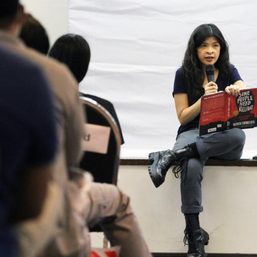
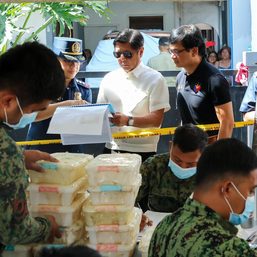
![[OPINION] ‘Some people need killing’](https://www.rappler.com/tachyon/2024/04/tl-some-people-need-killing-04172024.jpg?resize=257%2C257&crop_strategy=attention)
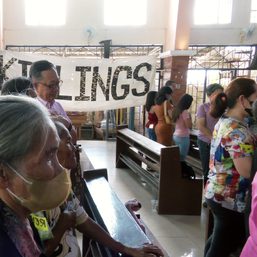
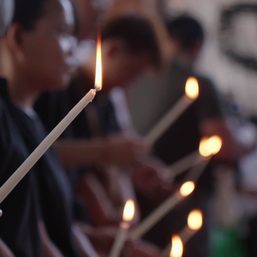

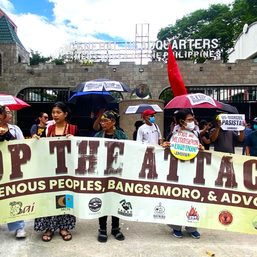
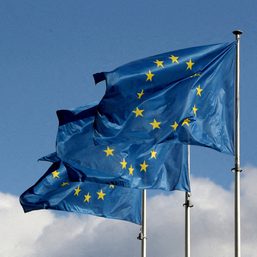
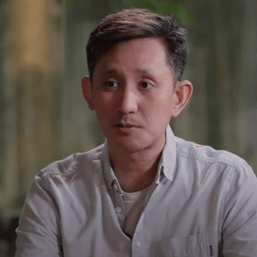
![[WATCH] Dahas Project, the team that continues to count drug war victims](https://www.rappler.com/tachyon/2024/03/dahas-project-2.jpg?resize=257%2C257&crop=404px%2C0px%2C1080px%2C1080px)
![[EDITORIAL] Sorry Arnie Teves, walang golf sa kulungan](https://www.rappler.com/tachyon/2024/03/animated-arnie-teves-arrest-carousel.jpg?resize=257%2C257&crop=310px%2C0px%2C720px%2C720px)
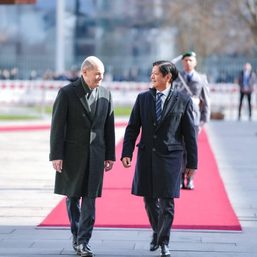
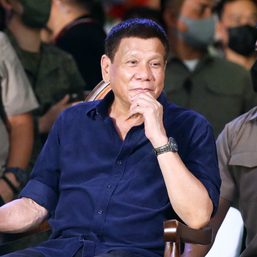
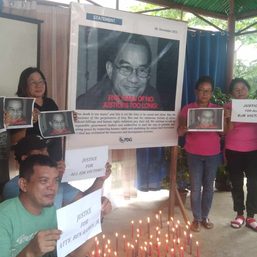
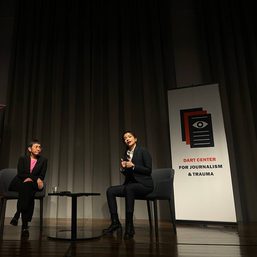
![[The Slingshot] Alden Delvo’s birthday](https://www.rappler.com/tachyon/2024/04/tl-alden-delvo-birthday.jpg?resize=257%2C257&crop=263px%2C0px%2C720px%2C720px)
![[EDITORIAL] Ang low-intensity warfare ni Marcos kung saan attack dog na ang First Lady](https://www.rappler.com/tachyon/2024/04/animated-liza-marcos-sara-duterte-feud-carousel.jpg?resize=257%2C257&crop=294px%2C0px%2C720px%2C720px)
![[Newsstand] Duterte vs Marcos: A rift impossible to bridge, a wound impossible to heal](https://www.rappler.com/tachyon/2024/04/duterte-marcos-rift-apr-20-2024.jpg?resize=257%2C257&crop=278px%2C0px%2C720px%2C720px)

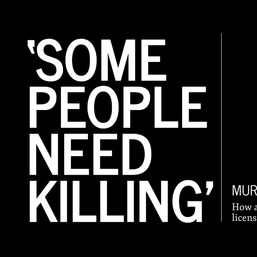

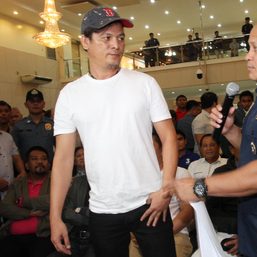
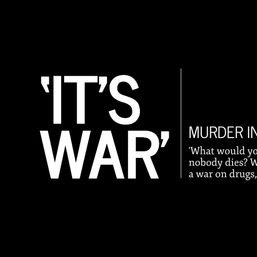
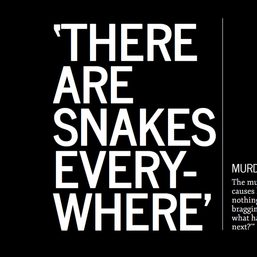
There are no comments yet. Add your comment to start the conversation.